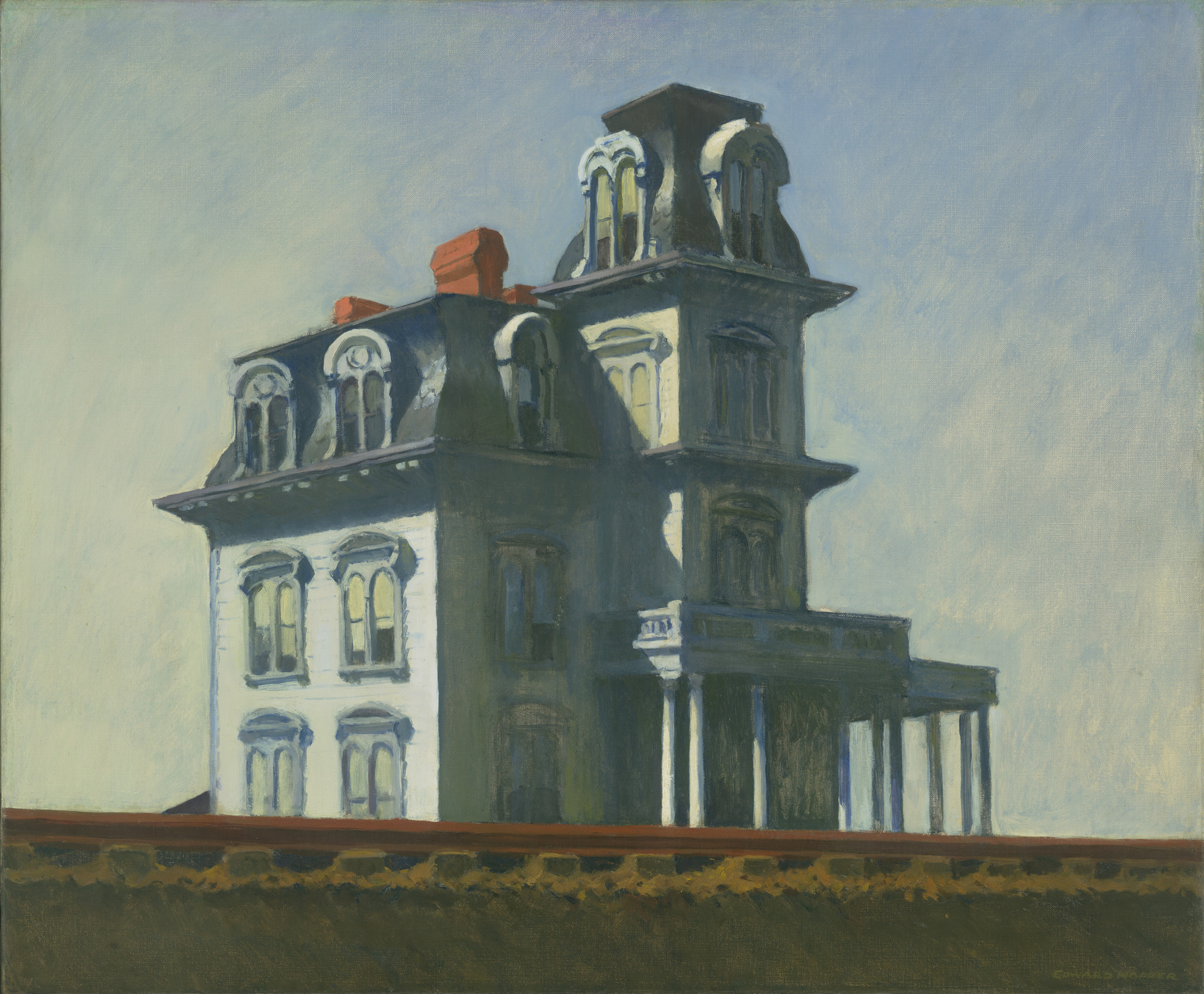In the previous article we thought about what it may mean to be an artist and finding your artist voice. I discussed my thoughts about finding my" voice" as well as shared the opinions of others. One particular article by Jerry Saltz I suggested that you read in order for you to get a handle on how one artist managed his career as an artist.
Today I want to look at the work of a particular artist named Edward Hopper. Edward Hopper is known as a Social Realist by some but a title he himself dismissed.
Edward Hopper quotes:
regarding Great Art and personal vision....
"Great art is the outward expression of an inner life in the artist, and this inner life will result in his personal vision of the world… …The inner life of a human being is a vast and varied realm."
More of me comes out when I improvise.
No amount of skillful invention can replace the essential element of imagination."
In: 'Statements by Four artists', Edward Hopper, in 'Reality' 1., Spring 1953, p. 8
"My aim in painting has always been the most exact transcription possible of my most intimate impression of nature."
"Originality is neither a matter of inventiveness nor method, it is the essence of personality."
Selden Rodman, 'Conversations with Artists' Capricorn Books, New York, 1961
Though I studied with w:Robert Henri, I was never a member of the Ash-Can School. You see, it had a sociological trend which didn’t interest me. [Hopper then proceeded to inform Kuh that his work contained no social content whatsoever]
In: 'Edward Hopper' (1962), Katherine Kuh, in 'The Artist’s Voice: Interviews with Artists' New York: Harper and Row, 1962:140
regarding Painting....
"If you could say it in words there would be no reason to paint.
More of me comes out when I improvise.
No amount of skillful invention can replace the essential element of imagination."
- I do not know why I chose one subject rather than another unless I believe them to be the best synthesis of my inner experience.
- Floyd Goodrich 'Edward Hopper' H. Abrams, New York 1971
- It is hard for me to know what to paint. It comes slowly.
- quoted by Gail Levin 'Edward Hopper - an intimate biography' (1995)
- It takes a long time for an idea to strike.
- quoted by Sheena Wagstaff 'Edward Hopper' Tate Publishing (2004)
- The whole answer is there on the canvas.
- Answer to journalists -quoted by Sherry Maker 'Edward Hopper '(1990)
- The man's the work. Something does not come out of nothing.
- Answer to journalists -quoted by Avis Berman -Article ' Hopper, the Supreme American Realist of the 20th Century' Smithsonian Magazine June 2007
- Maybe I am not very human - what I wanted to do was to paint sunlight on the side of a house.
- Comment on his 'Early Sunday Morning' (1930)
- The only quality that endures in art is a personal vision of the world. Methods are transient: personality is enduring.
- In: 'statement by the Chairman of the Jury', Corcoran Gallery of Art, Washington D.C. 1951, p. 7
- I wish I could paint more.. I do dozens of sketches for oils.. if I do one that interests me I go on to make a painting but that happens only two or three times a year.
In 1930, his painting House by the Railroad (1925; Museum of Modern Art, New York)
was the first work to be acquired for the collections of the newly founded Museum of Modern Art. This image embodied the characteristics of Hopper’s style: clearly outlined forms in strongly defined lighting, a cropped composition with an almost “cinematic” viewpoint, and a mood of eerie stillness.
He was by then celebrated for his highly identifiable mature style, in which urban settings, New England landscapes, and interiors are all pervaded by a sense of silence and estrangement (
25.31.2). His chosen locations are often vacant of human activity, and they frequently imply the transitory nature of contemporary life. At deserted gas stations, railroad tracks, and bridges, the idea of travel is fraught with loneliness and mystery (
37.44). Other scenes are inhabited only by a single pensive figure or by a pair of figures who seem not to communicate with one another. These people are rarely represented in their own homes; instead, they pass time in the temporary shelter of movie theaters, hotel rooms, or restaurants (
31.62). In Hopper’s most iconic painting, Nighthawks (1942; Art Institute of Chicago),
25.31.2). His chosen locations are often vacant of human activity, and they frequently imply the transitory nature of contemporary life. At deserted gas stations, railroad tracks, and bridges, the idea of travel is fraught with loneliness and mystery (
37.44). Other scenes are inhabited only by a single pensive figure or by a pair of figures who seem not to communicate with one another. These people are rarely represented in their own homes; instead, they pass time in the temporary shelter of movie theaters, hotel rooms, or restaurants (
31.62). In Hopper’s most iconic painting, Nighthawks (1942; Art Institute of Chicago),
four customers and a waiter inhabit the brightly lit interior of a city diner at night. They appear lost in their own weariness and private concerns, their disconnection perhaps echoing the wartime anxiety felt by the nation as a whole.
45.157.2). Wherever he traveled, however, Hopper sought and explored his chosen themes: the tensions between individuals (particularly men and women), the conflict between tradition and progress in both rural and urban settings, and the moods evoked by various times of day.


No comments:
Post a Comment
Feel welcome to place your message here.